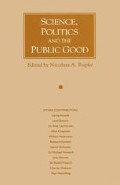Abstract
Ionising radiation affects us all, whether it comes from natural (cosmic and terrestrial) sources or from man-made sources. It consists of electromagnetic rays, of a shorter wavelength than light — the penetrating X- and gamma rays; and fast-moving particles — alpha particles (able to penetrate barely 0.1mm in tissue), beta particles (more penetrating) and neutrons. These radiations can ionise (that is, knock out electrons from) the atoms of materials through which they pass; in passing through living tissues, they can produce biological effects and may be damaging.
Access this chapter
Tax calculation will be finalised at checkout
Purchases are for personal use only
Preview
Unable to display preview. Download preview PDF.
Editor information
Editors and Affiliations
Copyright information
© 1988 Nicolaas A. Rupke
About this chapter
Cite this chapter
Arnold, L. (1988). Radiation, Language and Logic. In: Rupke, N.A. (eds) Science, Politics and the Public Good. Palgrave Macmillan, London. https://doi.org/10.1007/978-1-349-09514-8_9
Download citation
DOI: https://doi.org/10.1007/978-1-349-09514-8_9
Publisher Name: Palgrave Macmillan, London
Print ISBN: 978-1-349-09516-2
Online ISBN: 978-1-349-09514-8
eBook Packages: Palgrave History CollectionHistory (R0)

